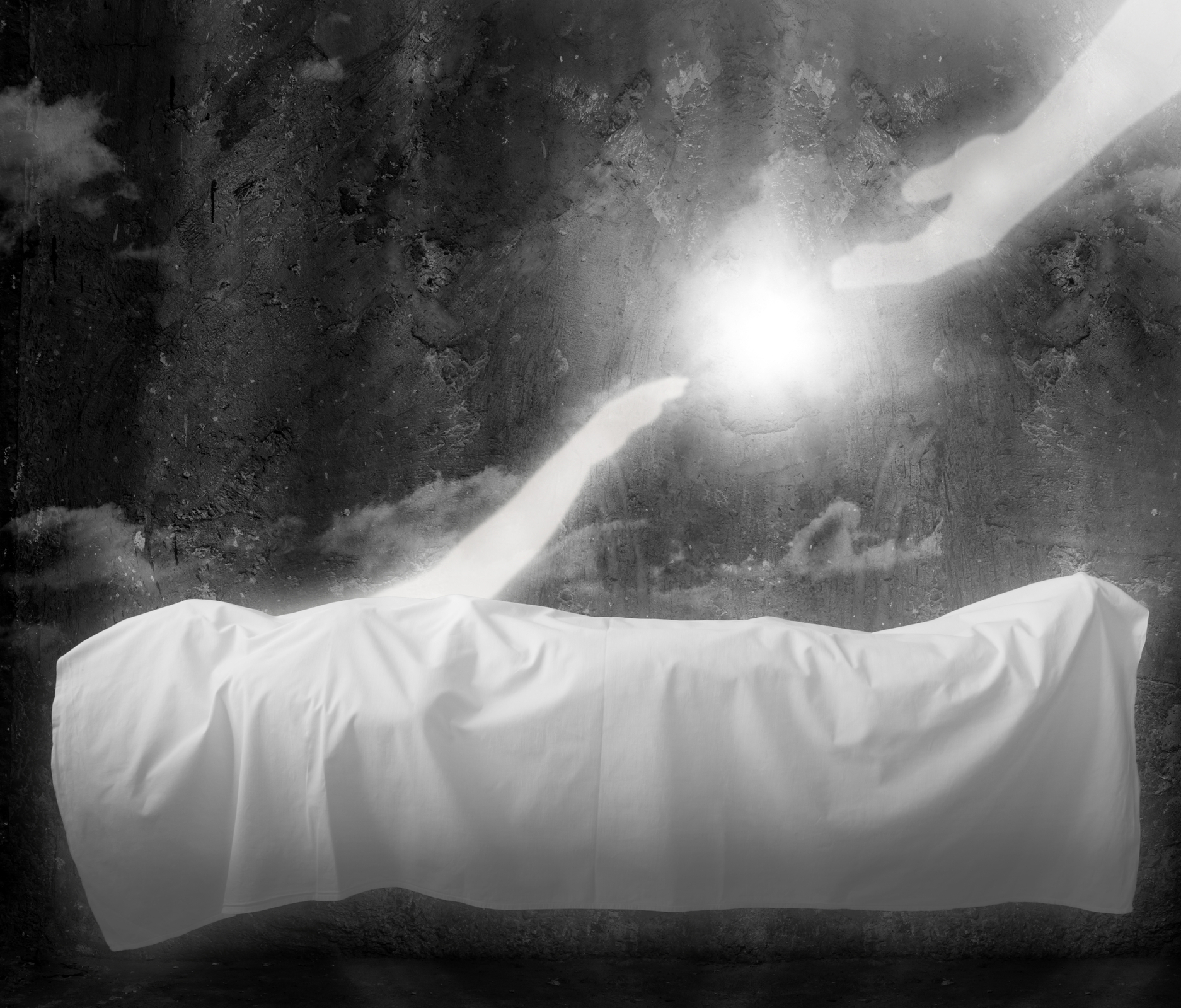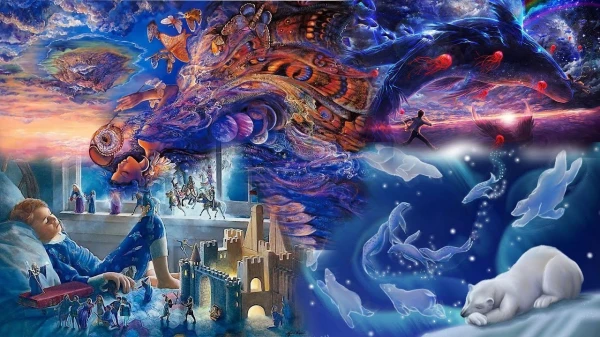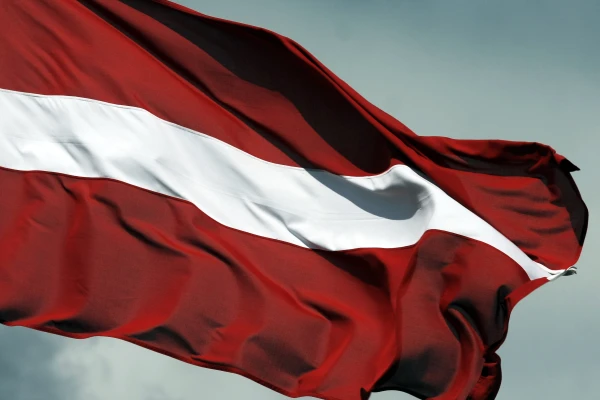
A near-death experience is a special category of visions and physical sensations that people have had in a state of clinical death. Scientists study them to answer the question: is there life after death or is it about the peculiarities of the dying brain's functioning?
Everyone would like to know for sure whether there is life after death. Materialists are convinced that after the last heartbeat, there is only darkness, final and irreversible. Their opponents at least hope that human consciousness does not disappear but simply transitions to another state — religious and mystical traditions refer to this as the soul in the "subtle" world.
In Tibetan yoga, the bardo, the principles of which were presumably formed in the 8th or 9th century AD, the state between death and rebirth — bardo thodol — is described in detail. According to this ancient tradition, the deceased experiences vivid visions of light, meets spirits and teachers, and sees images of past lives and the future. These descriptions are one of the first attempts to systematize the phenomenon of near-death visions, to understand what happens to consciousness at the moment of death.
Modern science is approaching the same questions, using electroencephalograms, neuroimaging, and surveys of people who have been brought back to life after coma and clinical death. Their experiences have even received a special name in science — near-death experiences, or NDE.
What is a Near-Death Experience
A near-death experience (NDE) is a complex of vivid experiences that occur in life-threatening states: cardiac arrest, clinical death, deep coma, and prolonged anesthesia with intubation. Medical professionals, psychiatrists, and psychologists study them together.
The concept became widely known thanks to Raymond Moody, who published the book "Life After Life" in 1975. It contains hundreds of testimonies from patients who experienced clinical death and identifies common themes for the first time: the sensation of separation from the body, a tunnel, light, and a feeling of universal love.
The book became a worldwide bestseller and initiated the systematic study of the phenomenon. Three years later, in 1978, the International Association for Near-Death Studies (IANDS) was founded, which still exists today and unites doctors, psychologists, and neurobiologists studying the boundaries of consciousness.
According to modern data, between 4% and 8% of people have experienced a near-death experience at least once in their lives — most often during loss of consciousness or clinical death. Moreover, these experiences are so intense that many return from resuscitation completely transformed: they lose the fear of death and become more empathetic and spiritual.
What the New 2025 Study Showed
The authors of a recent study titled "Architecture of Near-Death Experience Spaces," conducted by researchers from China and the UK and published on the bioRxiv platform, surveyed 48 people who had experienced clinical death.
The researchers asked participants not only to describe what they saw but also to depict the "geometry" of the experience — the shape of the space in which everything occurred.
The results are as follows.
There are no two identical near-death visions; each describes a unique "architecture" of the near-death experience. Nevertheless, all experiences of the visual field type can be divided into three groups.
Type A forms (from aperture) — a narrow cone resembling a tunnel (a possible consequence of narrowed vision due to decreased blood flow).
Type B (bowed) and C (closed) forms — oval and arch-like images where a small part of the visual field disappears.
Type C5 form — a complete 360-degree "spherical space of light" in which a person feels surrounded by radiance.
Themes of Near-Death Visions
The images seen by the dying are striking in their diversity — from religious and poetic to fantastical and almost cosmic. Below is a classification of themes provided by the study's authors.
1. Images of Christ
"To my left were stone steps, and at the top stood Jesus in white robes."
"I felt like a baby in my mother's arms... A light appeared, Jesus was on my right, with a beard, in a robe, showing me the way out."
2. Abstract Images of God
"God appeared as a huge light in the distance."
"The divine power was in front and to my right. I wanted to lift my head, but I couldn't or felt I shouldn't."
3. Nature Scenes
"There were flowers more beautiful than I had ever seen."
"There was a huge garden: hills, tall grass, people walking, playing children, animals wandering around."
From the account of patient No. 33
Type C2 space
"A hilly area, I am descending from the mountain. Through the trees, muted colors are visible — yellow, orange, bushes in the distance. It seems to be winter. Leaves touch my hands and feet as I descend; a river flows below. I hear voices, but it doesn't feel like meeting someone alive — more like memories or radio static."
4. Departed Loved Ones
"I saw my aunts, Elizabeth and Linny, young, although I remembered them already over sixty."
"My little son glowed with love and happiness, dissolving in the light."
"I felt that I was being guided, and I knew that it was my deceased grandfather directing me without words."
5. Matrix and Cosmic Structures
"It was like a matrix with many nodes connecting many dimensions. I felt that by entering it, I could go anywhere in the Universe — just by the power of thought."
6. Beings and Angels
"I saw an angel with snow-white wings, layers of feathers, a face like a Greek god, perfect features, and hair as if carved from marble."
"The face I saw was blurry, but I heard its voice in my head, telepathically."

Photo - Dreamstime
From the account of patient No. 28
Type B11 space
"I was in a room seemingly woven from light, and there were beings next to me, also made of light. We communicated telepathically, without words. The room was pink-golden, the light seemed to shimmer through everything around. There were four or five beings with me; I felt that one of them entered the room from behind and stood there.
There was a feeling that they could take on human form if I wanted, but their true essence had no specific shape as we are used to seeing people. They were very kind, gentle, and full of love.
They gently urged me to return to Earth: "Do you want to come back?", "Aren't you going to miss your mom?" and "What about your father?"
I didn't want to return to earthly life. Then they said that my father (because of him I drowned) would suffer all his life if I didn't come back. They allowed me to feel his pain — as if a sharp shard of glass was stuck in my heart. I felt this pain myself. Since I still didn't want to return, they said that my father would feel it until the end of his days, even as an old man, if I didn't come back. And I realized that this was unfair: no one should feel so much pain, not even my father. So I agreed to return."
7. Black Hole
"From a distance, it looked black, and around it was such bright light that all colors merged."
8. Visions of the Future
"I saw a nurse telling my family that I had died."
"Groups of people from the past, present, and future of Earth rushed past me."
9. Tunnel
"A loud roar, a tremor — everything began to compress into a tunnel. I entered a tunnel whose walls seemed to be made of something living; it was black but with rainbow shimmers."
"The walls seemed alive, were green and brown, with thin veins resembling vessels. The further I went, the wider the passage became."
10. Light and Energy
"I found myself in a huge bubble of light without borders, it completely surrounded me. I felt that I was part of this light."
"The light expanded until it engulfed me. I merged with it, as if we were one."
11. Escalator in the Darkness
"The escalator at a 45-degree angle rose in absolute darkness. Everything around was black, but I continued to move upward."
Comments on the Article about Near-Death Experience (NDE)
Interestingly, after the article about the mentioned study appeared in the Daily Mail, readers from different countries around the world, from Australia to Germany and the USA, began to actively discuss the raised topic. Several dozen people shared that they themselves or their loved ones had also experienced clinical death, or severe anesthesia. More than half reported visions similar to those listed by the researchers. The other half, on the contrary, wrote that there were no specific visions — only darkness, like in deep sleep.
Thus, a user named Graker Nogmister from Australia, who was several times on the brink of life and death, saw the "white light" twice during cardiac arrest; once he was walking towards a blindingly white wall, which a nurse's voice forbade him to approach — just at the moment when his bleeding stopped.
A user with the nickname Liz from London also saw a bright light, as well as the figure of a young man radiating love. And Sept1c from Germany reported that when his wife had a cardiac arrest during a complicated operation, she heard a warm voice and met deceased relatives. Several others admitted to visions of deceased relatives or white light surrounded by darkness.
Overall, just under 30% of users are more likely to allow for life after death, and about 50% are skeptical about this possibility.
How Near-Death Visions Arise: Scientists' Explanation
There are two main versions explaining such phenomena.
Neurobiological
NDEs are the result of the brain's activity in extreme conditions. When there is a lack of oxygen and glucose in the visual cortex, "tunnel vision" occurs, and the illusion of light is nothing more than a surge of electrical activity in neurons. The change in the balance of neurotransmitters produces a feeling of peace and "separation" from the body.
The fact that the authors of the mentioned study found that over time people typically transitioned from spaces of type A to C5 also suggests that they have the same physical cause — the peculiarities of the dying brain's functioning. This viewpoint is supported by the study's author, Frans Lerner from the Beijing Institute of Mathematical Sciences and Applications. As for the specific images from visions, in a comment to the Daily Mail, she noted that they are conditioned by the cultural and personal experience of the individual: a Christian will see Jesus, while a Jew will feel Yahweh and images from the Torah.
Changes in brain function and metabolism shortly before death, combined with cultural experience, can also explain why some people suddenly begin to dream of deceased relatives who warmly communicate with them and call them to join.
Yet there is another version that modern science cannot yet prove or disprove with certainty.
Transcendental
Many people around the world believe that consciousness can exist independently of the brain. What dying people experience is not a product of brain activity but the result of the soul's exit beyond the body. Cases where patients described details of events occurring around them during clinical death, when the EEG showed the brain was inactive, support this version. Therefore, even some representatives of science do not rule out (although they do not confirm) the possibility of life continuing after death.
This is yet another question that science still has to answer.














Leave a comment